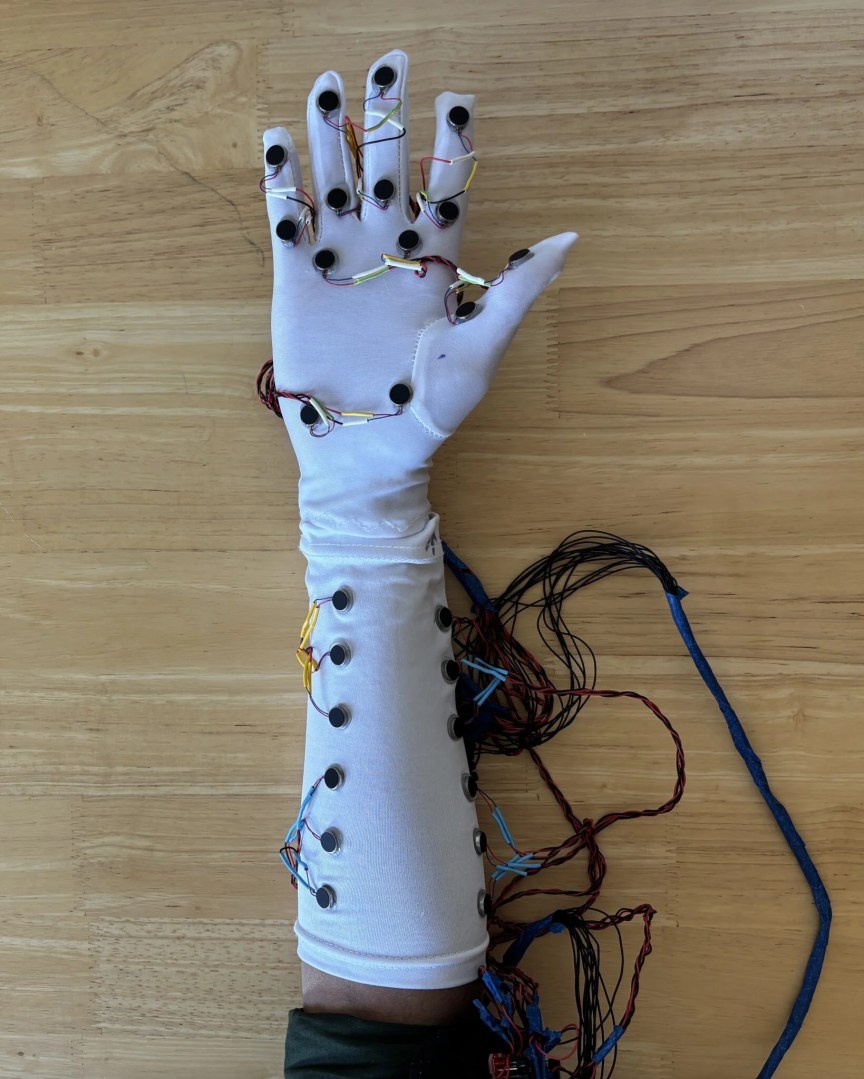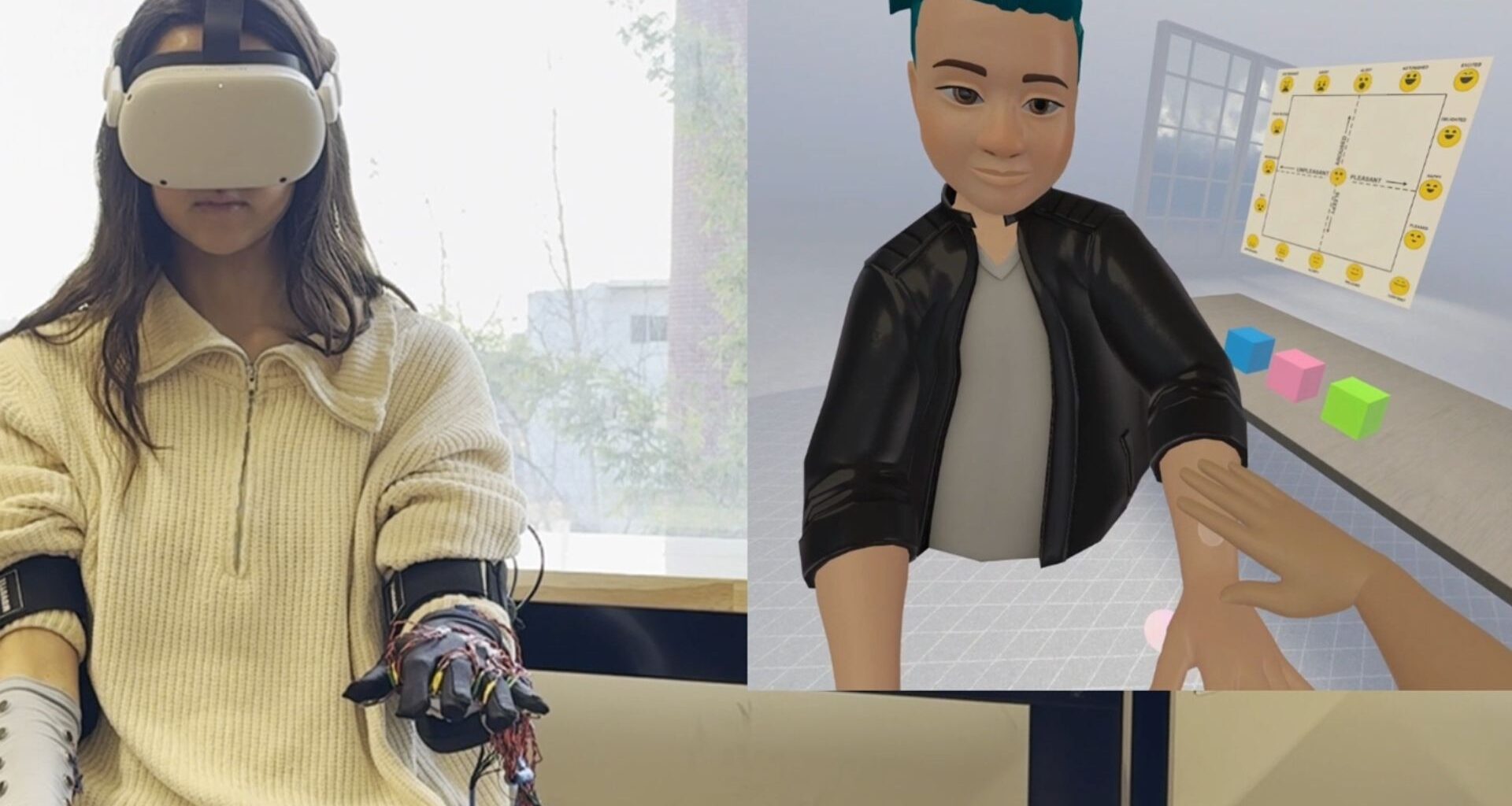In a world where screens increasingly mediate human connection, touch is fading from daily interactions.
But engineers at the USC Viterbi School of Engineering aim to change that with a new haptic system that brings physical sensations into virtual reality.
The wearable tech lets people feel gestures like handshakes, pats, and squeezes, even when separated by miles.
Their system, tested in a recent user study, uses gloves and armbands fitted with vibration motors to recreate physical contact in shared virtual spaces.
It’s designed to make digital communication more emotionally rich and realistic, and early results suggest it works.
Feelings through vibration feedback
The wearable system allows up to 16 users to interact inside a shared virtual environment.
Each person is represented by a full-body avatar that mirrors their real-world movement. Users can move freely, perform gestures, and interact with virtual objects like passing a cup or completing group tasks.
The tactile sensations are delivered through small motors in the gloves and sleeves. These simulate pressure and motion, making virtual gestures feel more lifelike.
A user study published alongside the IEEE World Haptics Conference found that people felt more emotionally connected when touch was included.
Interactions became more pleasant and engaging. The researchers also tested how variations in gesture speed and vibration type affected the emotional response, offering insights for future design.
“Even though people are spending just as much, if not more, time socializing online, we’re seeing rising levels of depression, anxiety and what’s often described as ‘touch starvation,’” said Heather Culbertson, associate professor at USC Viterbi and the study’s corresponding author.
“People will continue interacting virtually — it’s part of modern life. But how can we make online interactions better reflect the social benefits that come from real-world experiences?”
 New wearable haptic system. Credit – Premankur Banerjee/USC Viterbi School of Engineering
New wearable haptic system. Credit – Premankur Banerjee/USC Viterbi School of Engineering
Deeply personal project
The system emerged from a shared desire to feel closer to loved ones during long periods of separation.
Lead researcher and first author Premankur Banerjee, a doctoral student at USC, said the project came from lived experience
“This project was born from a simple, deeply human desire: to feel closer to the people we miss,” Banerjee said.
“Having spent over five years away from my own loved ones, this research was more than academic — it was personal,” he added. “It’s about using technology not just to simulate presence, but to restore a sense of physical closeness that’s often lost in long-distance communication.”
The technology’s implications stretch beyond casual conversation.
It could help patients in hospitals connect with family, enhance engagement in hybrid classrooms, or bring comfort to people separated by military deployment or travel.
“While platforms like Zoom and FaceTime have allowed families, friends and colleagues to maintain visual and verbal contact, these modes lack the physicality that humans naturally crave,” Culbertson said.
She added, “While the technology will not replace the experience of in-person contact, it can be a powerful tool to augment social interaction when physical presence is not possible.”
As more people turn to virtual spaces for daily life, integrating touch may be key to restoring a basic human need.
“Human touch is fundamental to our well-being,” Culbertson said. “Bringing the sense of touch into virtual spaces is a critical step toward more meaningful connection in today’s digital world.”
The study is available on the arXiv preprint server.
